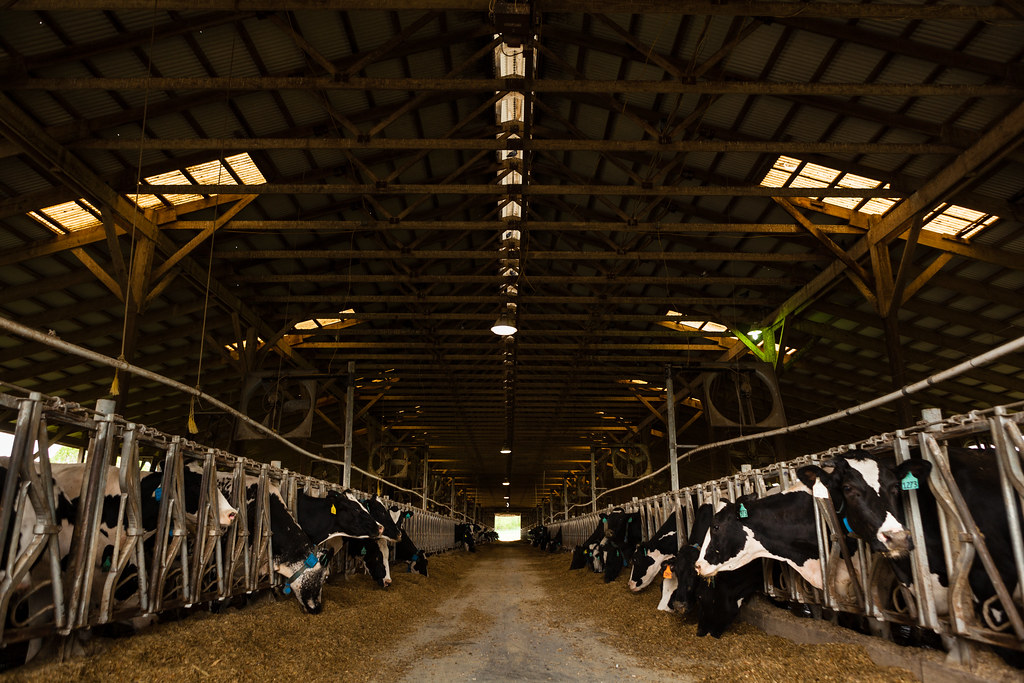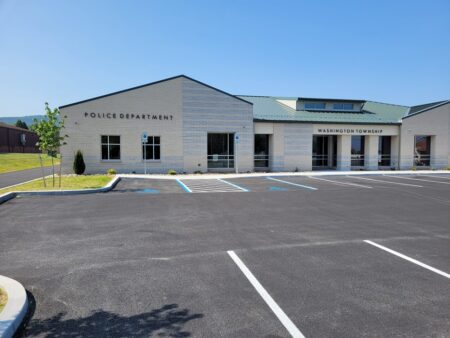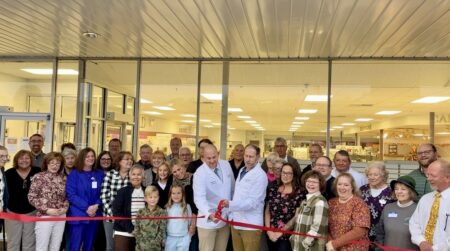My interest in local dairies started in the mid 1990’s. One day my wife was reminiscing about when she was growing up how she would go to her Uncle Hugh and Aunt Pearl Barlup’s farm in Zellinger for a week at a time. She enjoyed being on the farm, playing around the house, playing with the cats, playing in the hay loaf, and watching her Uncle Hugh milk the cow every day. During the conversation, she told me that years ago Hugh and Pearl operated a milk dairy on the farm, and she said it would be nice to have a Barlup’s quart milk bottle as a memory. That conversation started the search that goes on to this day, and includes items from many of the local dairies.
By Definition
Dairy: A business established for the harvesting of animal milk – mostly from cows or goats – for human consumption.
Creamery: A business where milk and cream are made into butter, cheese, and ice cream. A place where dairy products are sold. How do you get cream? Raw milk is left to stand, and the cream rises to the top.
Dairy History
A.J. Fahnestock Farm Creamery was in the original flour grinding mill on the Renfrew Park & Museum grounds. In 1881 B.S. Frantz & A.J. Fahnestock dismantled the grinding mill that had two 14-foot overshot wheels to use the building for their creamery. In 1882, they produced 75 pounds of butter and 6 cheeses per day. The butter was shipped to the city and sold for $0.35 per pound. In 1909, the +100-year-old original flour grinding mill / creamery building was taken down by D.S. Thompson.
In April 1899, B.S. Frantz moved to Rouzerville and opened the Blue Mountain Creamery. They produced cheese, cream cheese and cottage cheese. That same year John R. Frantz took over the creamery, installed new equipment and produced butter under the name “Bellevue.” Then he installed new equipment for large-scale production of ice cream.
In January 1885, D.O. Nicodemus Creamery opened in Zullinger. His son, Gilbert Nicodemus was the manager. In June 1909 the business was destroyed by a fire. Men, women and children set up a bucket brigade, but the building could not be saved.
During the 1880’s, one out of three homes in Waynesboro had a cow in the backyard. Owners used the milk themselves and sold excess to neighbors. Waynesboro Borough Council passed an ordinance that prohibited grazing cows on the streets. Cow owners did not appreciate this as they now had to keep the cow(s) in their yard or garden.
Dairy Delivery
Before bottles, the dairy ladled the milk into the purchaser’s container.
In 1897, Henry Lesher from the west side of town was the first door-to-door milk delivery man using his horse and wagon.
Much like the song:
Over the river and through the woods,
To grandmother’s house we go;
The horse knows the way to carry the sleigh,
Through (the) white and drifted snow!
The story is told that on an early morning in March 1904 local dairyman J. Frank Neibert hitched his horse to the delivery wagon. The next thing in the daily routine was to load the wagon with milk and then start the delivery route. On this day Mr. Neibert got out of his normal routine and he left the barn (some say a sick stomach). To his surprise when he returned to load the wagon the horse had left the building and started the delivery route without him or the milk. As dawn was breaking the Reverend J. R. Hutchison, pastor of the United Brethren Church on North Potomac St., saw the horse and wagon moving slowly up Potomac St., stopping at regular customers, waiting a few minutes, then moving on to the next stop. Rev. Hutchison caught up with the horse at the corner of Potomac and Penn St., took the horse and wagon to the hitching post at the parsonage and then called Mr. Neibert and told him the story. Mr. Neibert went to the church parsonage to get the horse and wagon, returned to the barn to load the milk and then start the route, several hours late that day. The horse knew the way.
In 1909, Arthur’s dairy opened its milk plant on Philadelphia Ave. The business was very successful. In 1923, they doubled the size of their facility. Sometime in about 1923, Arthur’s Dairy was the first in Waynesboro to produce pasteurized milk and cream. The milk was heated to 140 degrees Fahrenheit and held there for 30 minutes, then quickly cooled to below 50 degrees. This process destroyed germs that may have gotten into the milk.
Early morning milk deliveries made by the horse drawn wagon – and later in the square box milk truck, would be placed in an insulated container near the home’s front door. Winter low temperatures would often freeze the milk, forcing the cream and bottle cap up an inch or two above the top of the glass bottle. That was before milk was homogenized.
With a 4 a.m home delivery, how did the milkman know what to leave? Some customers received the same item every day or every other day. Some would leave an empty quart bottle in the outside container and that meant they needed a full quart bottle. The delivery man would record what was left at each house in his Milkman’s Account Book.
Each local dairy had their own milk bottle design. The old round glass bottles with the embossed name and other info like Arthur’s Dairy say, “It’s Safe” and the newer style square pyro with a painted dairy name and other info like Barlup’s Dairy has a cow and say,“Chucked Full of Vitamins.” Many of the bottles have the year they were manufactured embossed on the bottom of the bottle. Many have a telephone number that can help date the bottle. All the different milk bottles are attractive, but my favorite is Hull’s Dairy design. The paint on the Hull’s Dairy bottles is a beautiful dark red, simple print on a 45-degree angle and under that is a telephone number and Waynesboro PA.
Each local dairy had their own designed delivery box that would be placed at the front door of the home.
Each local dairy had their own designed crates that the bottles would be placed in for transit from the dairy to the home.
Each local dairy delivery man had an aluminum handheld carrier that he could put 6 or 8 bottles of milk in and carry to the front door of the house so that he had what was needed for the homeowner.
Rich Memories
When I was a teen, I had a job delivering the Hagerstown Morning Herald newspaper for several years, it was a several mile bike route. The last delivery on my route was the Waynesboro Hospital. Monday through Saturday I delivered (10) newspapers to the lady at the front desk at the hospital. As I left the hospital to return home, I would go around the east end of the hospital building, up Enterprise Ave., turn right onto Roadside Ave. and ride home, which is on Gehr Rd. On Saturday morning Mr. Donald Meckley, the owner of Antietam Dairy on South Church St. would be making a delivery of milk to the hospital kitchen on the east end of the building. Every Saturday I would stop and purchase a pint of chocolate milk from Mr. Meckley, put it in my newspaper sack and race home. When I got home and put my bike away, I would go to the kitchen table, open the pint bottle of chocolate milk, and sit there and drink the milk and read the newspaper cover to cover. I especially liked the sports section and the page with cartoons. The Antietam Dairy Chocolate Milk was the BEST, it was so thick and so rich in flavor.
During the Christmas season the Antietam Dairy would make a thick and rich eggnog. That was always a special treat for several weeks during the Christmas and New Years Holidays.
In the mid 1960’s when my wife and I were dating we took lots of walks from her home on West Main Street to Arthur’s Dairy on Philadelphia Ave. to get an ice cream cone. It was amazing to walk into the ice cream shop and see all the different flavors in the 2.5-gallon brown cardboard containers. Our favorite flavor, and the one we got most all the time was Bittersweet. It remains our all-time favorite flavor 50+ years later.
This story was an original submission by Rick Mouer.





















